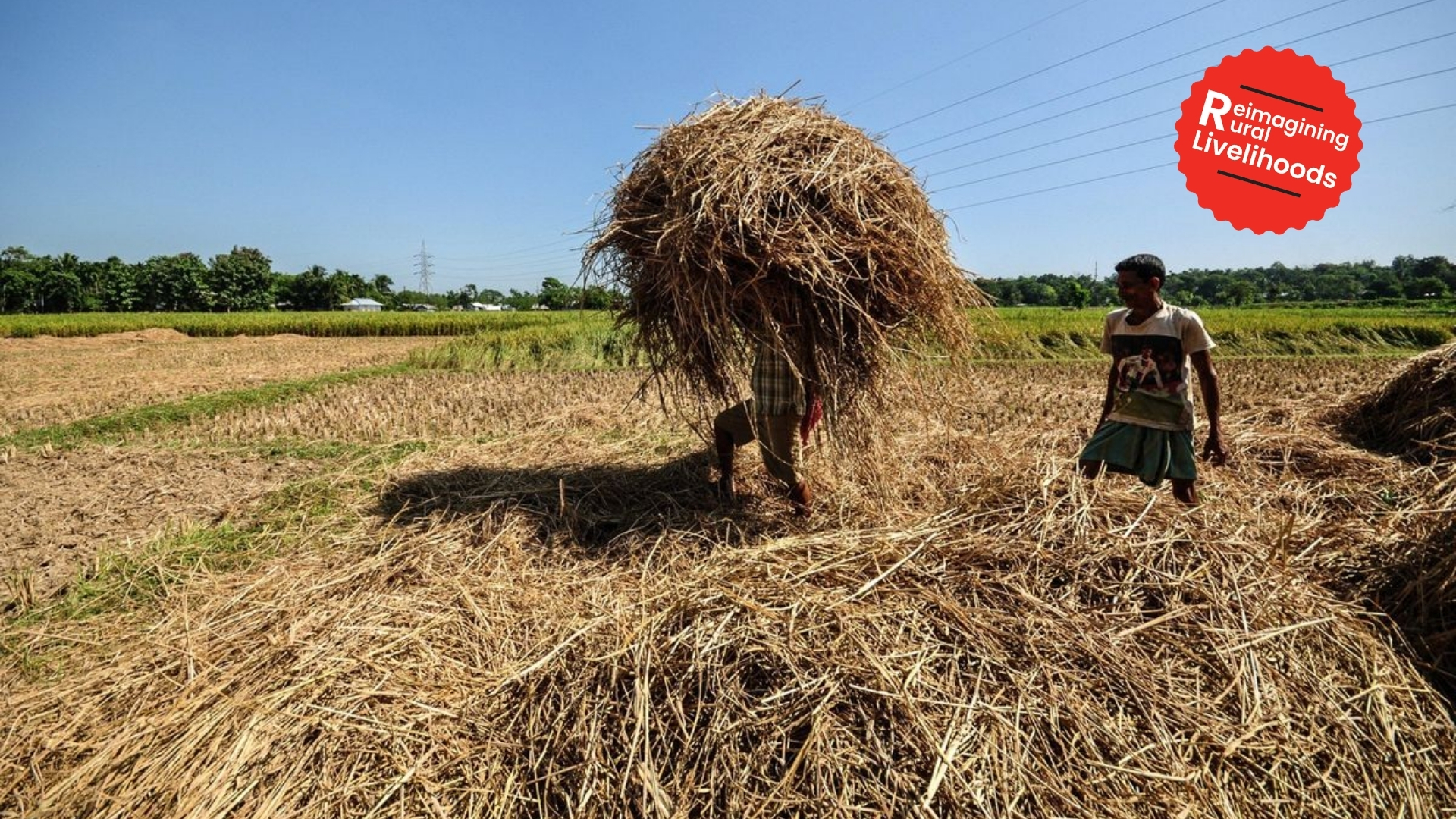Turning Agri-Waste into Wealth

When converted into biofuel, packaging, or construction materials, agri-waste can become the cornerstone for sustainable development, since they are potential raw materials for green industries and can improve rural livelihoods.
Every year, particularly in North India and the capital city of Delhi, residents experience health challenges with smog and high PM2.5 levels — a part of which emerges from stubble burning in surrounding states. While farmers are often blamed for contributing to the air pollution, it is important to recognise the hidden opportunity offered by agri-waste. India produces nearly 500 million tonnes of agricultural residue every year, much of which is burned or wasted, causing environmental challenges such as air pollution, soil degradation and loss of potential value. This includes straw and husk from rice and wheat (350 million tonnes), sugarcane bagasse (120 million tonnes), cotton stalks (15 million tonnes), and pulses & oilseed residues (10–12 million tonnes).
Yet, these very residues hold immense promise. When converted into biofuel, packaging, or construction materials, these “wastes” can be a cornerstone for sustainable development, since they are potential raw materials for green industries and can improve rural livelihoods.
From Pollution to Possibilities
Agri-waste can be converted into biofuels, compressed biogas, bioplastics, fertilizers, packaging materials, and even construction products. For example, rice husk can be converted into bio-fuel and silica for construction. Wheat and paddy straw can be used to make packaging boards, paper, cutlery, or bio-CNG. Bagasse powers sugar mills, and it while already being processed into bioethanol, the scale can be upgraded. Cotton stalks can be transformed into particle boards and briquettes. Even fruit and vegetable peels can yield organic fertilizers and bioplastics. Briquettes from agri-residue can be easily supplied to thermal power plants and other MSMEs which depend on coal for energy and other productions, thereby reducing dependency on coal by nearly 20% & more. Such value addition not only reduces dependence on fossil fuels and plastics, but also helps to reduce carbon emissions and creates a ‘Circular Economy’ where waste becomes a resource that benefits the environment, the economy and the communities. For instance, instead of stubble burning, farmers could earn additional income by supplying residues to local processing units that can be easily established through (created under) Self Help Group (SHG) institutional platforms with negligible investments.
Local Innovation, Global Impact
By investing in agri-waste conversion, India can reduce stubble burning, reduce air pollution that affects 250 million people annually, and expand green industries. Local processing clusters and public–private partnerships can turn residues into fuels, fertilizers, packaging, and construction materials, thereby generating jobs. Investing in agri-waste conversion aligns with India’s climate commitments, circular economy goals and rural employment schemes. Through cluster-based processing, public–private partnerships, and CSR investments, rural communities will benefit from improved soil health and stronger, more inclusive economy.
PCI India considers agri-waste as an untapped opportunity rather than a challenge. It is already into the phase of starting off one unit supported by State Rural Livelihood Mission and is looking forward to more partnerships and resources to expand the scope since market demand for briquette, biochar and other products like dinnerware from paddy husk in India is very high. Converting agri-waste into value-added products can empower rural livelihoods while advancing India’s clean energy and climate goals. PCI’s vision is to unlock the hidden value of crop residues and promote the integration of rural enterprise-based livelihood through green innovation; not just as an environmental necessity but as an economic opportunity to build resilient, self-reliant communities across India.
When every stalk and husk find values, India breathes better and grows stronger.
The Author is Shantamay Chatterjee, Director – Livelihood with WEE at PCI India, and this is part of his blog series titled “Reimagining Rural Livelihoods: From Subsistence to Sustainability.
